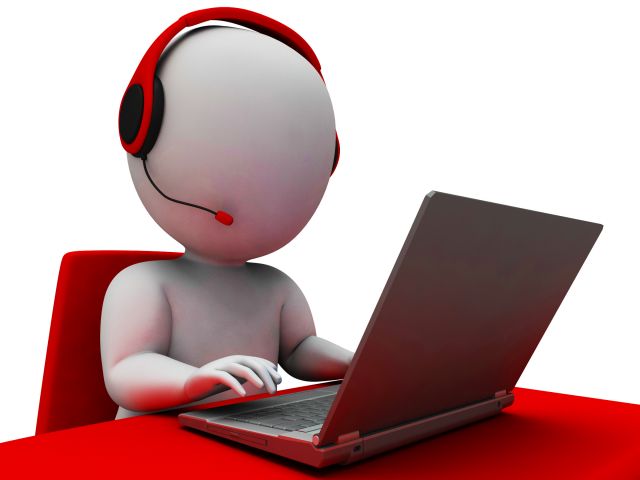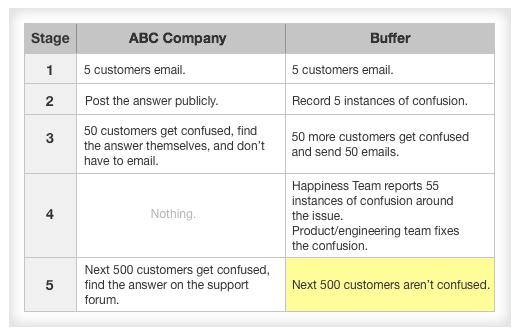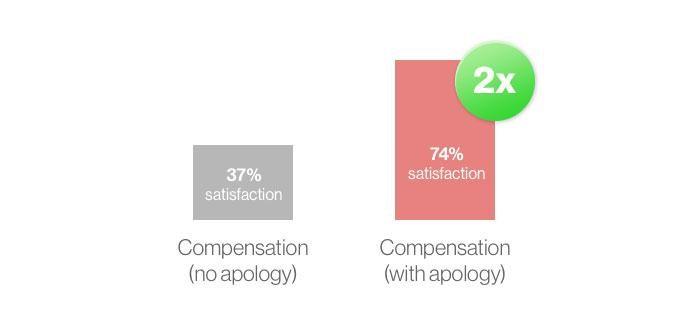8 Customer Support Hacks to Boost Your SaaS Retention Rates

Retention is key to any company’s growth. From the supermarkets to B2B tech services, everyone relies on loyal customers to bring in steady revenue.
In fact, the Pareto Principle says that 80% of your income typically comes from 20% of your customers.
When it comes to SaaS, retention rates are a crucial metric.
Even if the SaaS market is predicted to grow immensely by 2020, this doesn’t mean it’s easy to make it in this niche.
Yes, customers need SaaS solutions. This is why well-established software companies go through SaaSification as we speak. This is also why tons of new small and medium SaaS companies appear every day.
Sadly, some SaaS companies also disappear just as quickly as they appeared.
And most often it happens because they can’t boost their retention rates.
According to ForEntrepreneurs, a SaaS company pays $1.48 for acquiring a dollar of new customer revenue. However, it only costs $0.28 per dollar gained when you upsell an existing customer.
That being said, it becomes clear why SaaS retention rates are important: if you pay more than you earn from a new customer, pretty soon you will have a depleted budget, but no steady income of justify it.
In other words: SaaS retention rates are key to actual ROI.
We’ve spoken about a great SaaS content strategy as key to client acquisition and client retention. Similarly, about selling to the wrong customer and how it can stunt your growth.
While both of them are key to boosting your SaaS retention rates, you can also use some customer support hacks for the same purpose.
Let’s check them out.
8 Customer Support Hacks to Boost SaaS Retention Rates
Customer support is often unfairly treated as a second-class citizen by marketers.
And that’s a pity, really.
Sure, we all prefer to deal with shiny campaigns on new media. But the customer support department can provide us with more useful insights than social media research or any other tool.
Think about it this way: the customer support team deals with your actual buyer persona. The persona who already bought from you.
It doesn’t get any closer to home than this.
Consequently, every interaction with your existing customers should be treated as an unparalleled opportunity to learn. Learn from their questions, complaints and even congratulatory messages.
More importantly, there’s no better way to boost SaaS retention rates than to make sure you ace every interaction. Here’s what you can start with:
-
Skip the FAQ
An FAQ section is great for people who want to DIY. It also helps you with SEO.
So why not have a comprehensive one on your SaaS website, you ask?
Well, because it may prevent you from learning what people really think.
Take the Buffer example, for instance. They don’t scale their support and they don’t have what you’d call a robust knowledge base.
Carolyn Kopprasch, the Chief Happiness Officer (note her title!) explains why:
 Image via CaroKopp.com
Image via CaroKopp.com
In other words: if 50 people find the answer to their problem on their own, Buffer can’t tell it’s a widespread issue. If, on the other hand, they receive 50 emails about the same problem, they know they need to take action immediately.
Acting on bugs and software issues immediately is the best way to keep customer happy and boost your SaaS retention rates.
-
Get Personal
There’s nothing worse than canned responses.
Personalization isn’t only important for your email campaigns, but for your support tactics, too.
Before you direct the customer to a video or a help page you created, take a moment to think whether you would appreciate such a response. Not you as a customer support specialist. You as another human using other services.
No matter how good the content you prepared in advance is, it can never beat a personalized response to a customer’s problem.
This doesn’t mean that you shouldn’t leverage content in your support replies. It just means that you need to make sure you add a personal touch to every reply, irrespective of how common the customer’s problem is.
“I checked your account and saw that X is indeed malfunctioning. Here’s how you can solve it.”
This is a much better reply than simply telling your customer what link they should follow to get the issue sorted out. Add “I’m here if you need additional help” and you’ve got a winning reply.
Whatever you do, avoid cutting and pasting instructions from different sources. Odds are the customer will be able to spot the different fonts. And that’s even worse than a canned response.
-
Be Human
The support emails signed by Jane, Jill or Jack need to die a quick death.
While it’s true that support departments have huge churn rates, it doesn’t mean that you should make things as impersonal as possible so that any new employee can swoop in and pick things up as they go.
User personalized email addresses for your support staff. Add a last name, for God’s sake. And, if you really want to go the extra mile, add your staff’s photo to the emails.
This will give your customers the feeling that they’re talking to a real human and not a bot. That there is someone out there who’s really working to solve their problem.
-
Be Fast
41% of customers expect to receive a response no later than six hours after their initial email.
When a customer takes to social media instead of email, the response time is even shorter: less than four hours.
Of course, if the customer lives in a different time zone, it’s acceptable (though not recommended) to take longer. If you know you have a lot of customers in other time zones, you can consider ensuring round the clock support.
But what do you do when you need more than four or six hours to figure out your customer’s problem?
You tell them that. SaaS retention rates depend a lot on you being transparent. On telling people that you are doing your best to offer them a great experience. But that you may fail sometimes.
Tell your customers you need more time to come up with the right solution. Reassure them that it’s your priority. And when you do have that solution, be sure to get back to them as quickly as possible.
-
Be Proactive
If you know of an issue that is about to become manifest, don’t wait to receive tens of emails about it. Let your customers know that you’re aware of the problem and that you’re working on fixing it. Give a deadline if possible.
Here’s a good example: when Twitter announced they would introduce limitations to tweets sent via third-party app, most of the social media management tools in this industry reacted quickly.
At Idunn, we use quite a few of these SaaS solution for our social media management and marketing clients.
Long before the changes came into effect, we received emails from Sendible, Buffer and Agorapulse (in that order). All of them told us that they are working on integrating these changes within their solutions before they take effect.
And they did.
Before March 23rd, all these SaaS solutions had a way to tackle the changes. More importantly, they sent numerous resources and announcements to make sure that each of their customers knows what’s coming.
-
Compensate Customers When You Make a Mistake
Yes, mistakes will happen. They happen to the best.
But if you want them not to affect your SaaS customer retention rates, the first thing you need to do is be transparent about them.
Acknowledge your mistakes. Tell people you’re sorry for them. Then explain what you’re doing to fix them and make sure they never happen again.
And go the extra mile. Offer a compensation.
Research suggests that 11% of churn rate can be prevented by simply reaching out to the customer after a bad experience.
And when you reach out, offer a compensation AND an apology. Here’s why:
 Image via Buildfire
Image via Buildfire
-
Upsell and Crossell
A better plan or a new service can do wonders for your SaaS retention rates. The logic is quite simple: the more a customer invests in your business, the harder it is for them to let it go.
Plus, when you crossell or upsell an existing customer, your profits are also increasing, so it’s a win-win.
However, be sure to do it at the right time. Invite people to upgrade only when you notice that they have almost depleted their current plan.
Crossell them a solution after intensive research into their buyer persona and behavior.
Without the right timing and research, a sales-y email will look pushy and greedy. And it will chase customers away instead of retaining them.
-
Listen!
The last piece of advice here is to listen. I mean really listen.
I know it’s hard to accept criticism, especially on something that you’ve worked really hard to build. But criticism can be the building block of your continuous improvement.
Yes, customers can be difficult. And, at times, they can also be wrong.
But assuming they are from the get-go won’t have a pretty effect on your SaaS retention rates.
Even when a customer is wrong, perhaps it’s not their fault – your documentation may be incomplete, for instance.
So take the time to really listen to what they have to say. Today’s customers tend to be really honest. And while that means they won’t be sparing your feelings, it also means that you have an amazing opportunity to improve your services by looking at them through the eyes of your customers.
Conclusion
Offering excellent support is not the easiest thing. You won’t be able to please everyone. But this doesn’t mean you shouldn’t try.
And, while you’re at it, why not use support for more than its intended role? Use it get valuable insights. Your retention rate will thank you!
Need to boost your SaaS retention rates? We can help you with ROI-oriented copywriting and SaaS marketing strategy. Let’s talk!

